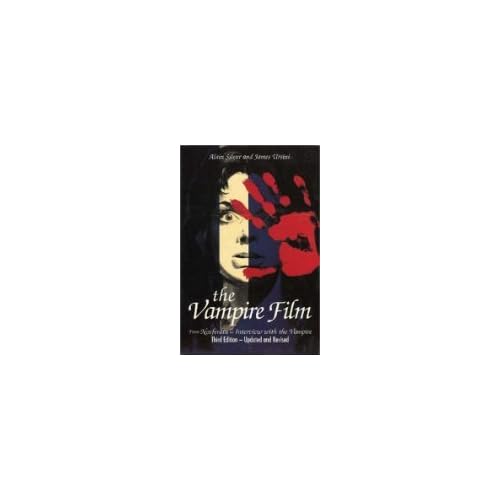The Vampire Film: From Nosferatu to Bram Stoker's Dracula
Category: Books,Humor & Entertainment,Movies
The Vampire Film: From Nosferatu to Bram Stoker's Dracula Details
Amazon.com Review When it was published in 1975, The Vampire Film was the first book in English devoted to the topic of vampire movies. Now newly updated, with a number of chapters covering the intervening two decades, The Vampire Film stands as the best researched and most illuminating book on its subject. In their thematically organized chapters, authors Alain Silver and James Ursini discuss how the movies have created a developing tradition of vampire lore. There is even a chapter on "The Multimedia Vampire." Full of helpful commentaries and loaded with stills from the movies discussed, this book is both good scholarship and an entertaining read. Read more From Library Journal This revised and updated version of the original 1985 title covers the popular film genre from 1922's silent pioneer, Nosferatu , to 1992's more turkey than bat Bram Stoker's Dracula. The authors present these celluloid plasmaphiles from several perspectives: male, female, Victorian, New Age, cruel, sympathetic, and more. There is also a history of vampire films and an extensive filmography. Though many other genres have died out, the vampire film, much like vampires themselves, seems always to return.Copyright 1993 Reed Business Information, Inc. Read more

Reviews
"The Vampire Film" (second edition) is not an exhaustive study of vampire films. Rather it is a survey of the genre literally from "Nosferatu" to "Bram Stoker's Dracula". It encompasses 70 years of vampire films, through 1992, the second edition of the book being published in 1993. It's not as detailed as those familiar with Alain Silver's books on film noir might expect, but "The Vampire Film" is a solid analysis of the genre for students of film and vampire aficionados. The style is academic. Authors Silver and Ursini analyze the evolution of this horror sub-genre that, although consistently populated by vampires, encompasses everything from romantic expressionist to exploitation films.The first chapter, "Sources of Vampire Lore in Film", discusses vampire folklore, including hypotheses as to why it is so universal, real people with blood fetishes, from the 15th century's Gilles de Rai to the mid-20th century's John Haigh, and vampires in literature. Chapter 2, "The Male Vampire", talks about the Count Dracula character and films, in particular, as well as Mexican vampire films of the 1950s and 1960s, Hammer Studio films, and sympathetic vampires. In Chapter 3, "The Female Vampire" gets a similar treatment with analysis of the films inspired by the 16th century Hungarian Countess and murderess Elisabeth Bathory and Sheridan Le Fanu's novella "Carmilla", including Carl Dreyer's 1932 expressionist masterwork "Vampyr". Chapter 4, "Emerging Traditions", serves as a segway between the first and second halves of the book. Since, as of 1993, 90 percent of vampire films had been made since 1958's "Horror of Dracula", this chapter discusses some of the characteristics of these modern films. Chapters 5 and 6 have confusing titles. They address vampire films made between 1972 and 1992, as the previous chapters on male and female vampires include films almost exclusively before that period. Chapter 5 is entitled "Dracula A.D. 1992" and talks about the trends toward gothic romance, comedy, teen movies, and vampires who lament their endless, sunless existence in films from 1972-1992. Chapter 6, "Countess Dracula A.D. 1992", explores the various cinematic interpretations of Carmilla, Elizabeth Bathory, and other female vampires 1972-1992. The last chapter, "The Multimedia Vampire", summarizes the state of vampires in modern media other than film: literature, television, and "natural" vampires, meaning people who really drink blood. There is a 45-page Filmography in which films are listed alphabetically by title. Date, studio, and principal crew and cast are included for each film. And there is an index.


